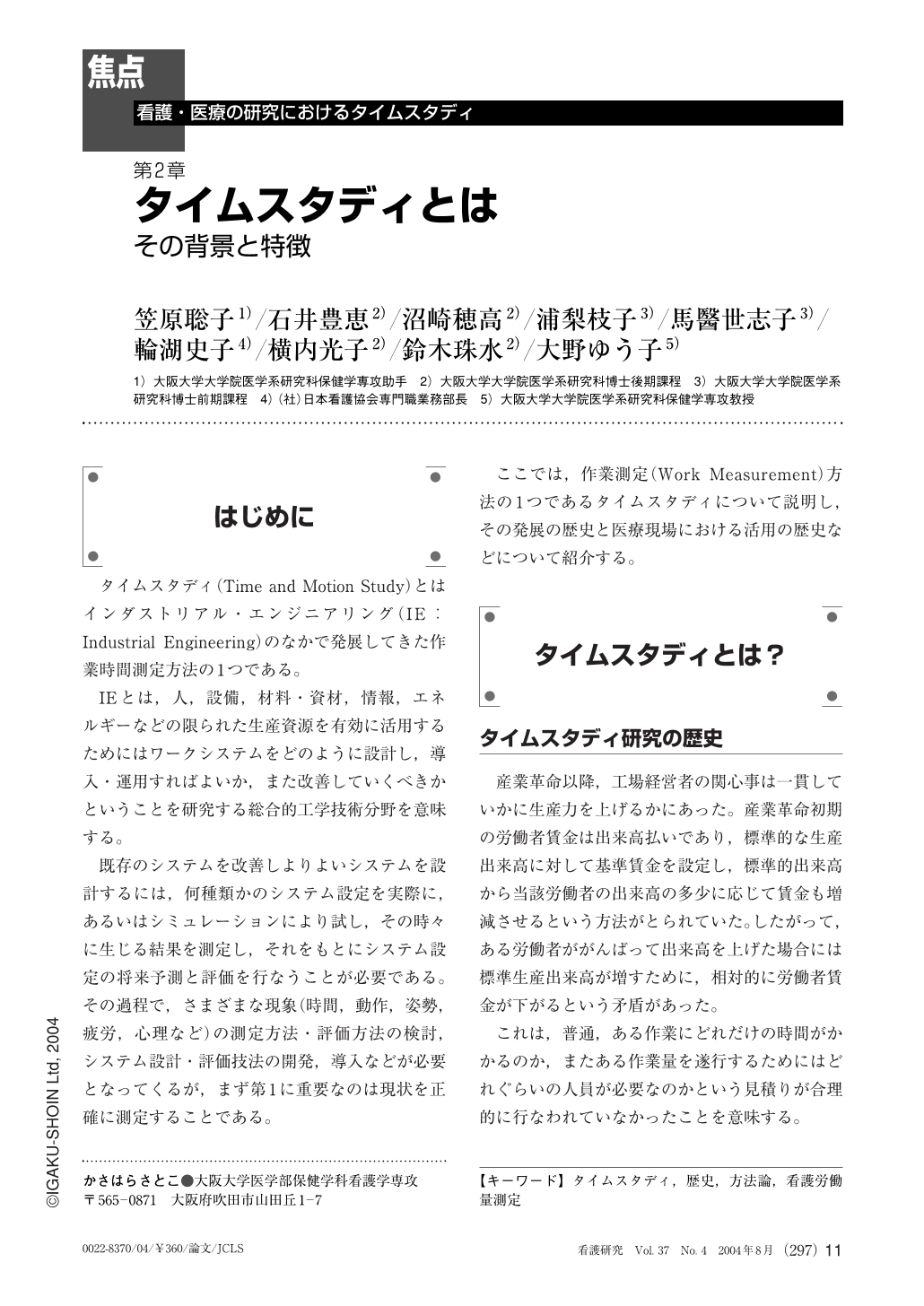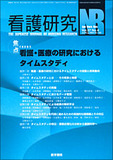Japanese
English
- 有料閲覧
- Abstract 文献概要
- 1ページ目 Look Inside
- サイト内被引用 Cited by
はじめに
タイムスタディ(Time and Motion Study)とはインダストリアル・エンジニアリング(IE:Industrial Engineering)のなかで発展してきた作業時間測定方法の1つである。
IEとは,人,設備,材料・資材,情報,エネルギーなどの限られた生産資源を有効に活用するためにはワークシステムをどのように設計し,導入・運用すればよいか,また改善していくべきかということを研究する総合的工学技術分野を意味する。
既存のシステムを改善しよりよいシステムを設計するには,何種類かのシステム設定を実際に,あるいはシミュレーションにより試し,その時々に生じる結果を測定し,それをもとにシステム設定の将来予測と評価を行なうことが必要である。その過程で,さまざまな現象(時間,動作,姿勢,疲労,心理など)の測定方法・評価方法の検討,システム設計・評価技法の開発,導入などが必要となってくるが,まず第1に重要なのは現状を正確に測定することである。
ここでは,作業測定(Work Measurement)方法の1つであるタイムスタディについて説明し,その発展の歴史と医療現場における活用の歴史などについて紹介する。
Time and motion study is one of various workload measurement methodologies that aim for the control of operation, and has been developed in industrial engineering (IE). In the field of healthcare, the time and motion study has been used as a workload measurement for adequate staffing, improvement of care, and a cost accounting.
In this chapter, we describe the history of time and motion study in IE and refer to some popular methods in the healthcare field, such as stopwatch time and motion study, work sampling, estimation based on the patient classification system and so on, and empirical estimation.
As for stopwatch time and motion study and work sampling, there are “observational” and “self-reporting” approaches for data collection.
We also explain some of their advantages and disadvantages. In addition, we review the literature to outline the trend of time and motion study in Japan and the world.

Copyright © 2004, Igaku-Shoin Ltd. All rights reserved.


